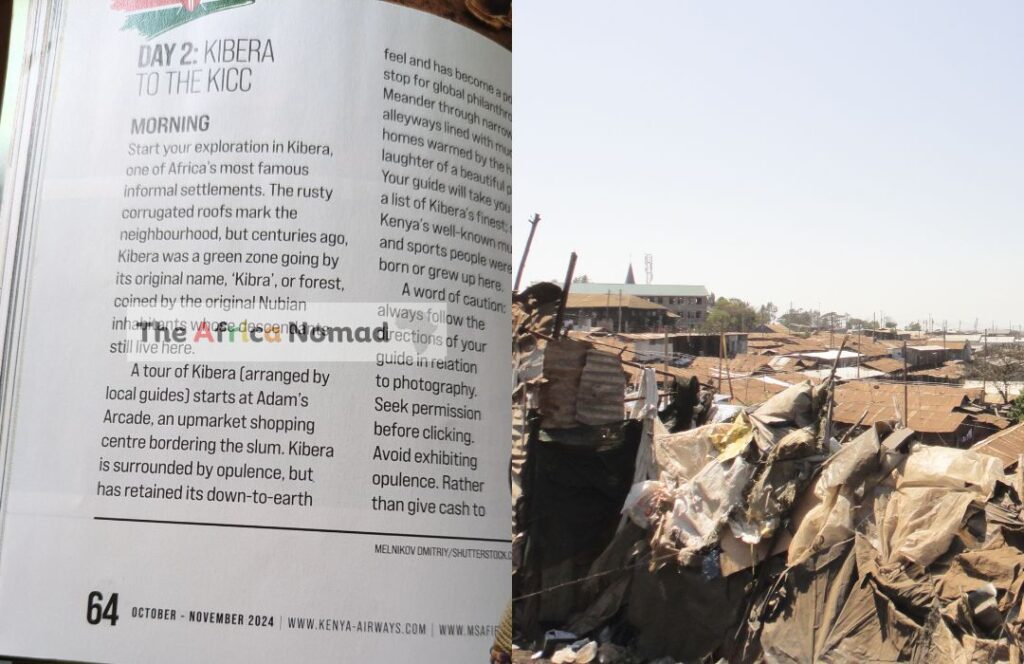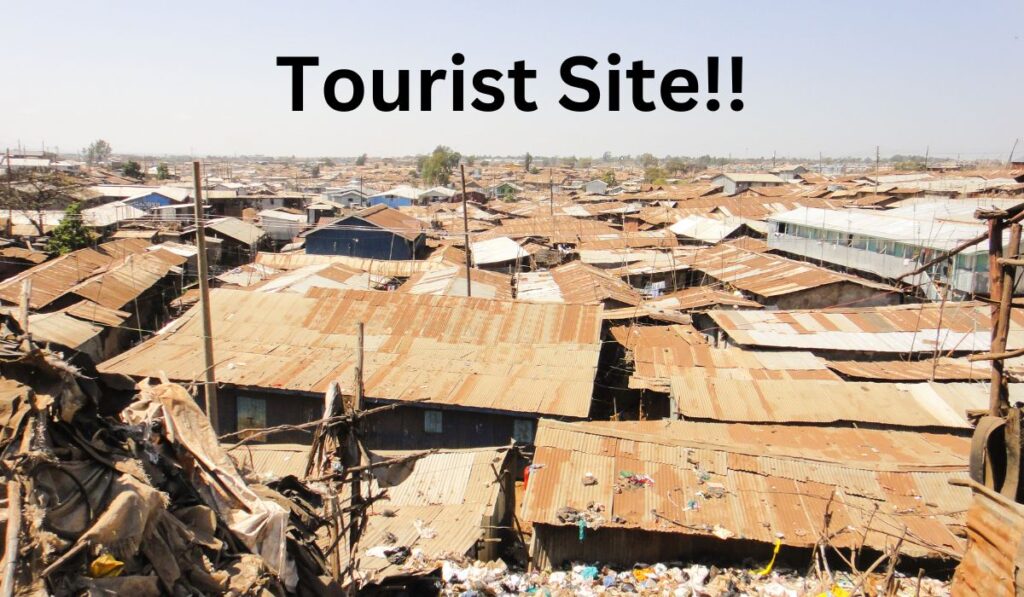Recently, I visited Addis Ababa and flew Kenya Airways, The Pride of Africa.
While I was entertaining myself with the onboard magazines, I came across a travel tip section that was guiding tourists on how to spend 48 hours in Nairobi.
I was intrigued as I wanted to see if I had visited some of these places that they have listed.
The fourth destination in this list was what caught my attention and why I am writing this article.
And what was the destination?
Kibera or Kibra depending on how you would like to pronounce it.
The magazine listed Kibera as a tourist site and encouraged tourists to have a feel of this ‘humble’ area.
I have extracted part of the text from the magazine below:

DAY 2: KIBERA TO THE KICC
MORNING
Start your exploration in Kibera, one of Africa’s most famous informal settlements. The rusty corrugated roofs mark the neighbourhood, but centuries ago, Kibera was a green zone going by its original name, “Kibra,” or forest, coined by the original Nubian inhabitants whose descendants still live here.
A tour of Kibera (arranged by local guides) starts at Adam’s Arcade, an upmarket shopping centre bordering the slum. Kibera is surrounded by opulence, but has retained its down-to-earth feel and has become a popular stop for global philanthropy.
Meander through narrow alleyways lined with makeshift homes warmed by the hearty laughter of a beautiful community. Your guide will take you through a list of Kibera’s finest shops, some of Kenya’s well-known makers and sports people were born or grew up here.
A word of caution:
Always follow the directions of your guide in relation to photography. Seek permission before clicking. Avoid exhibiting opulence. Rather than give cash to individuals, give cash to local charities.
Kibera is the largest slum in Nairobi and the largest urban slum in Africa.
To categorize it as a tourist site, in my opinion, is a huge shame.


